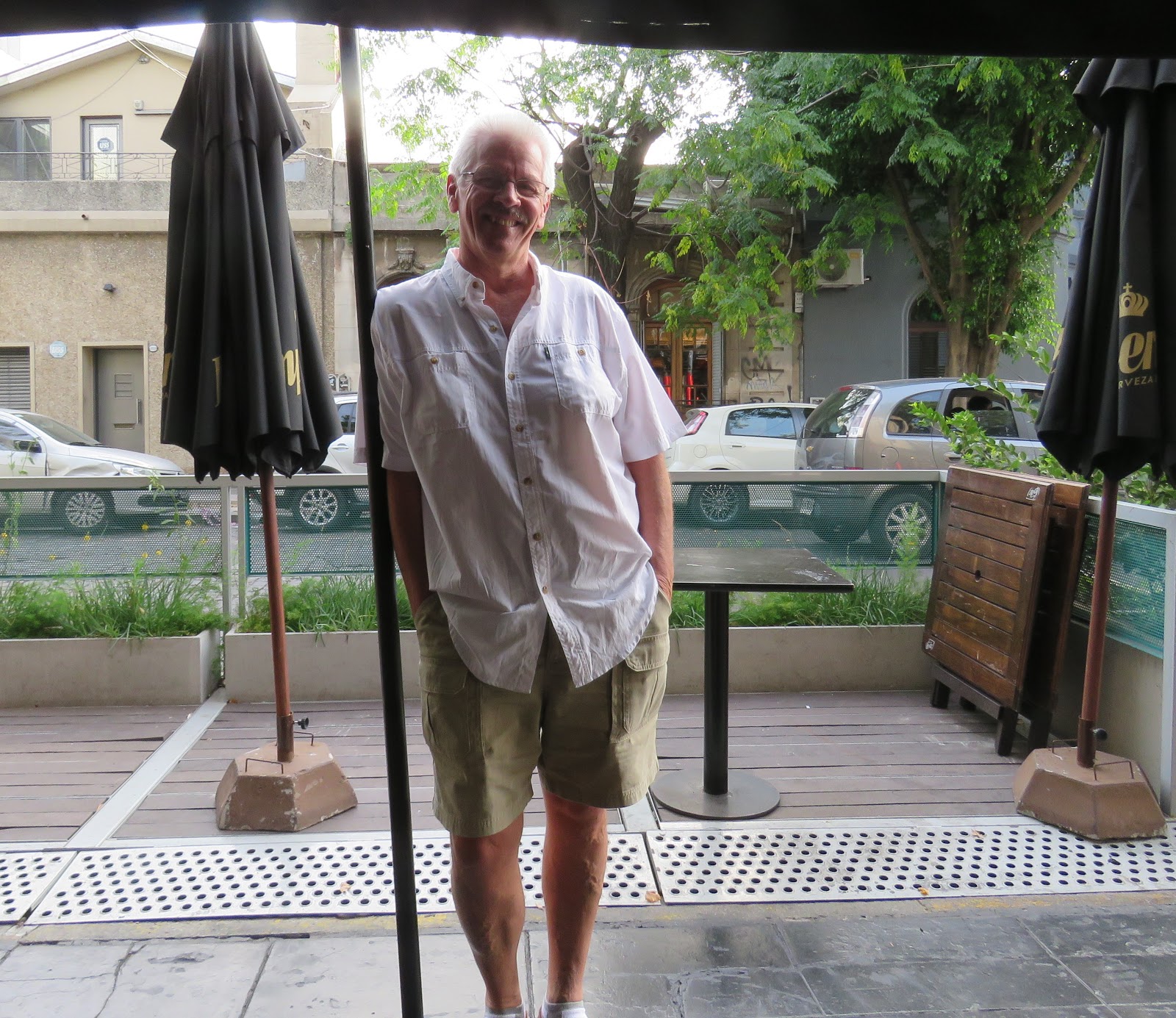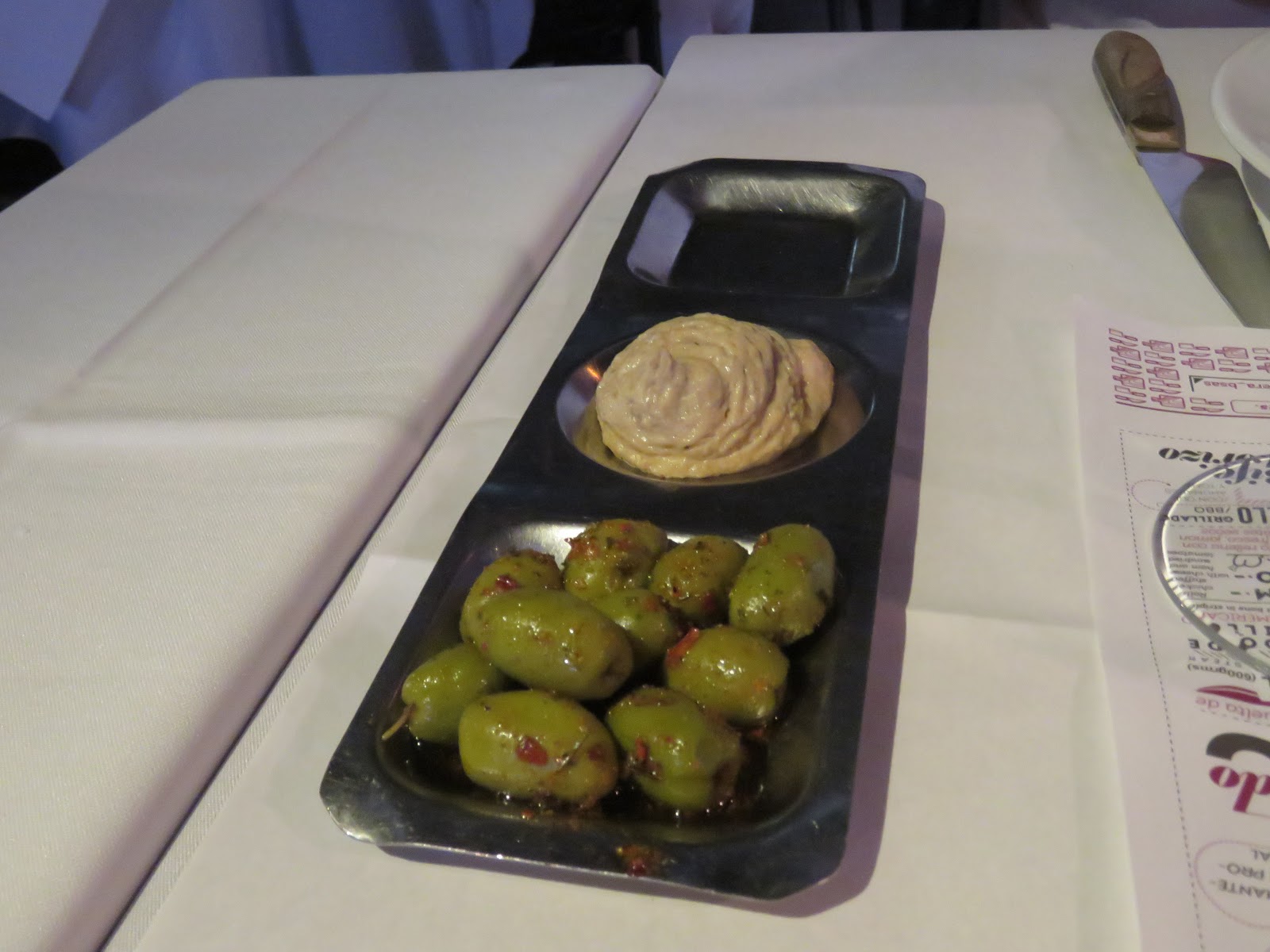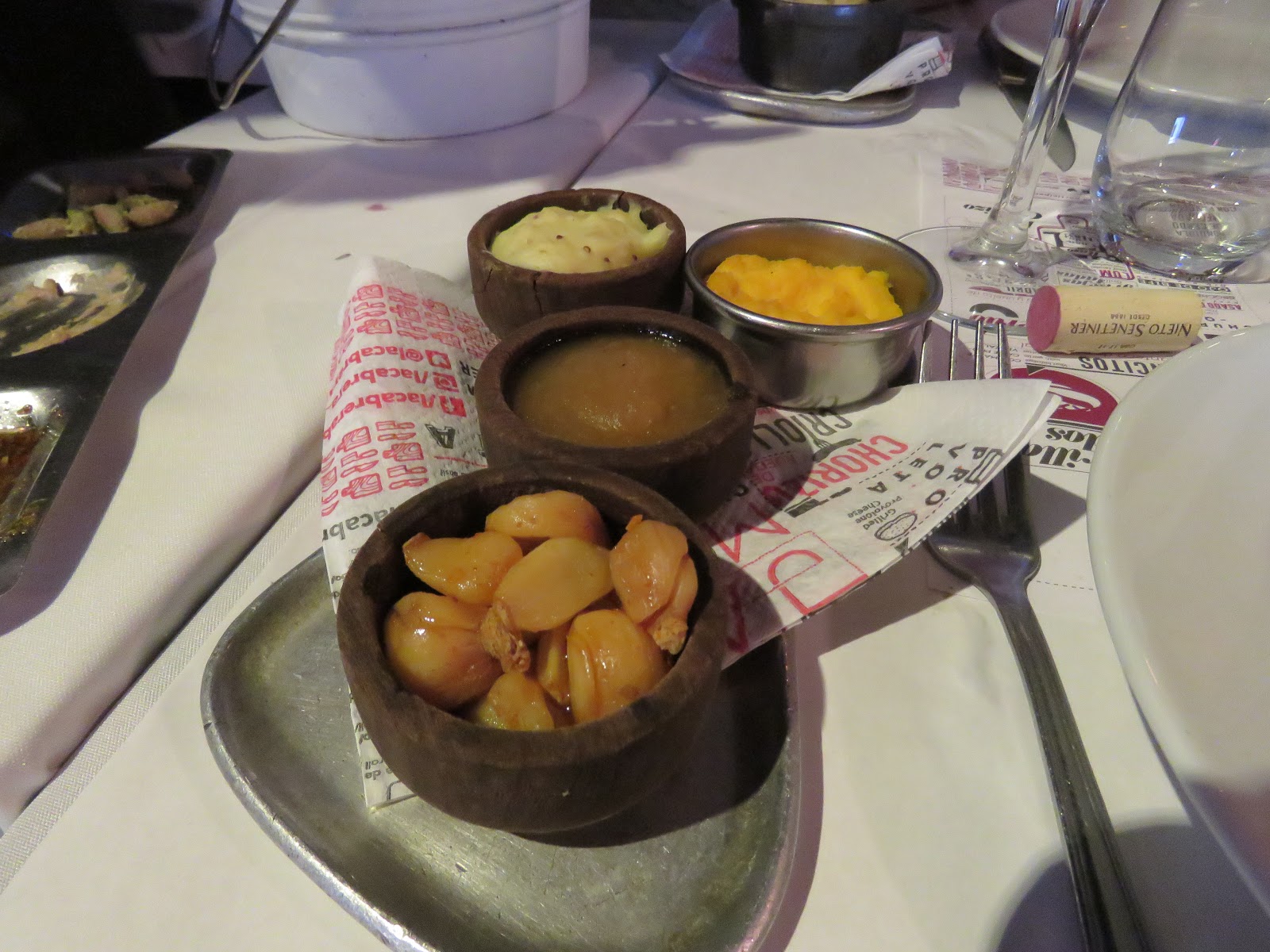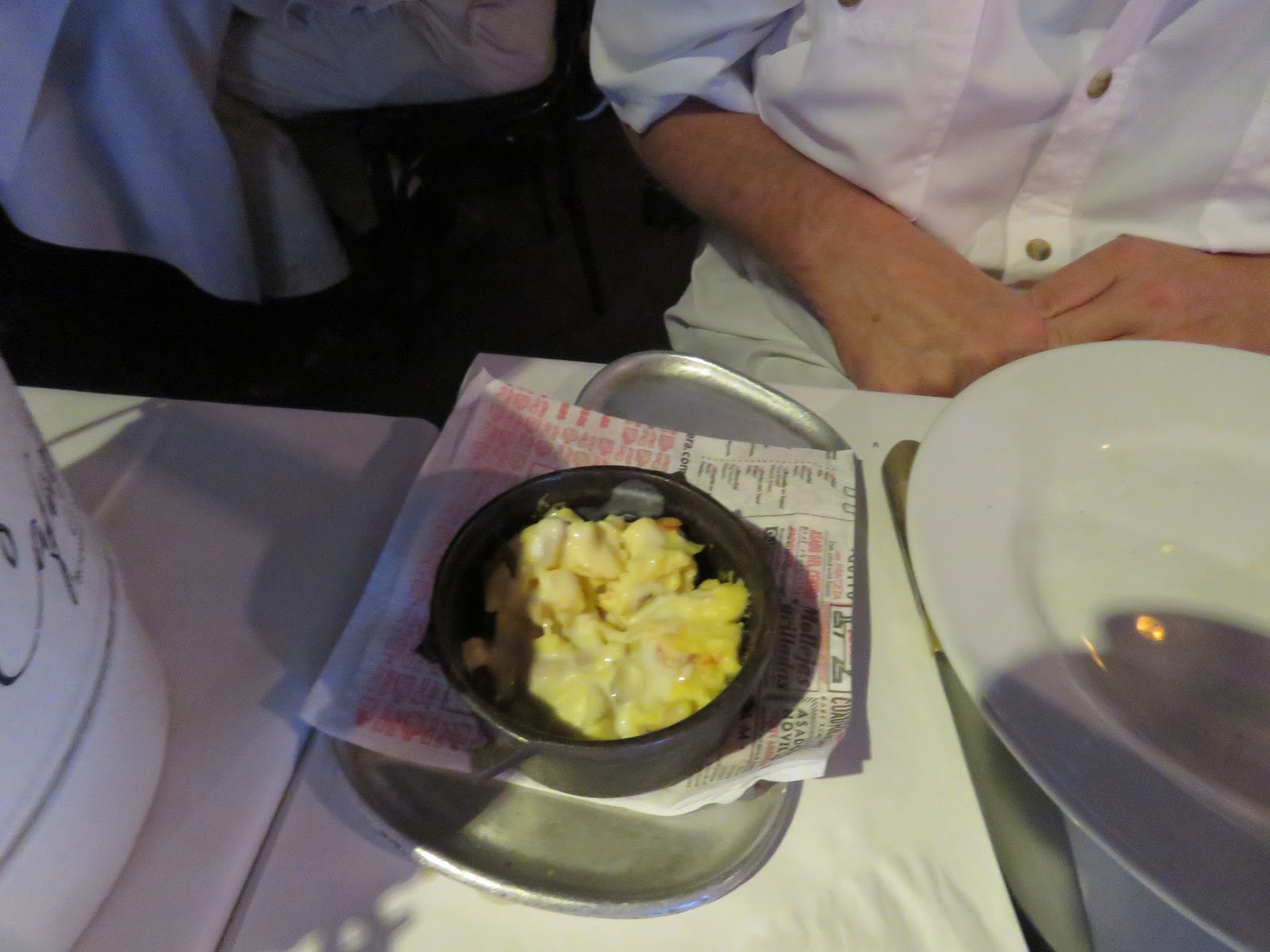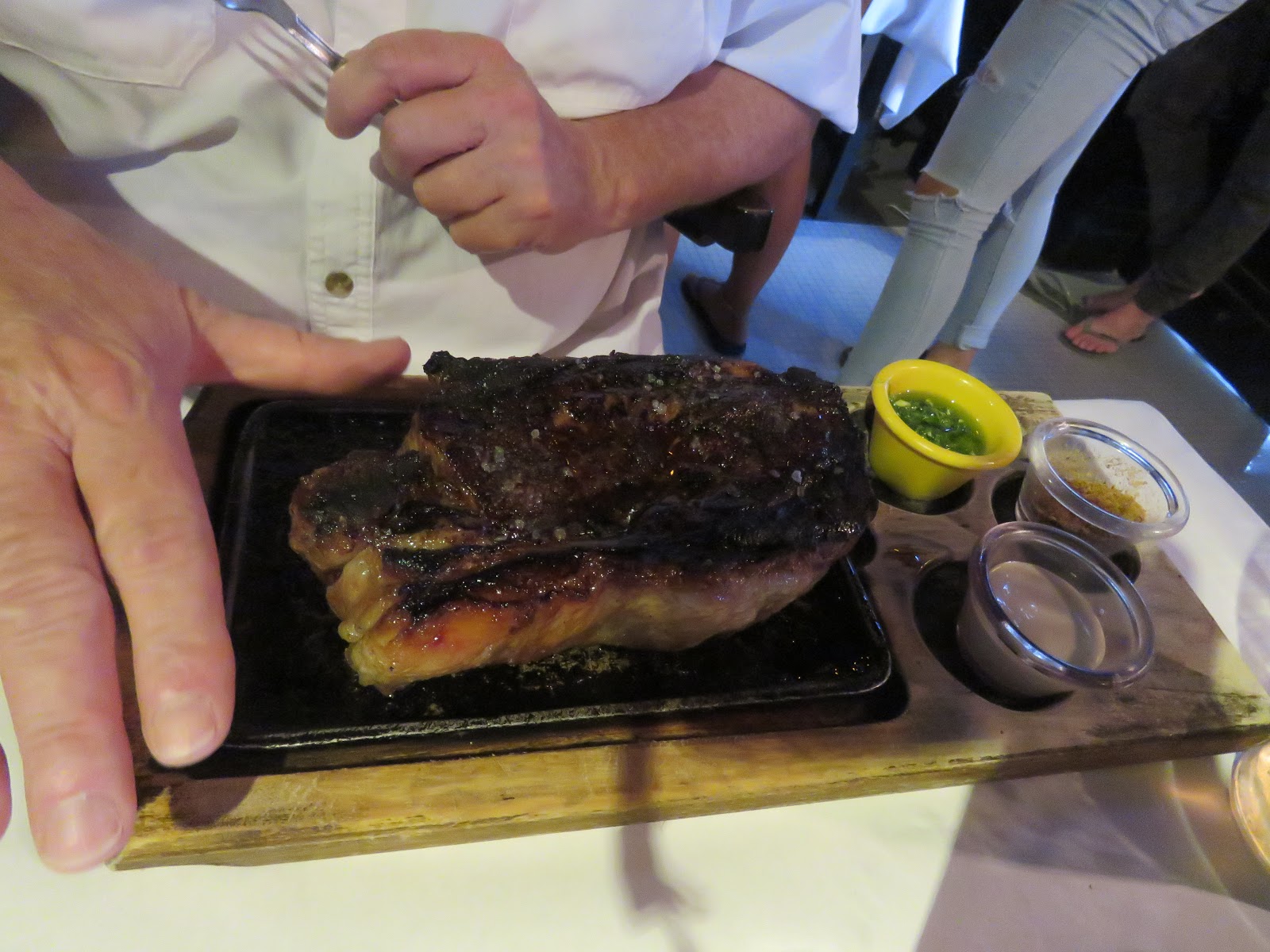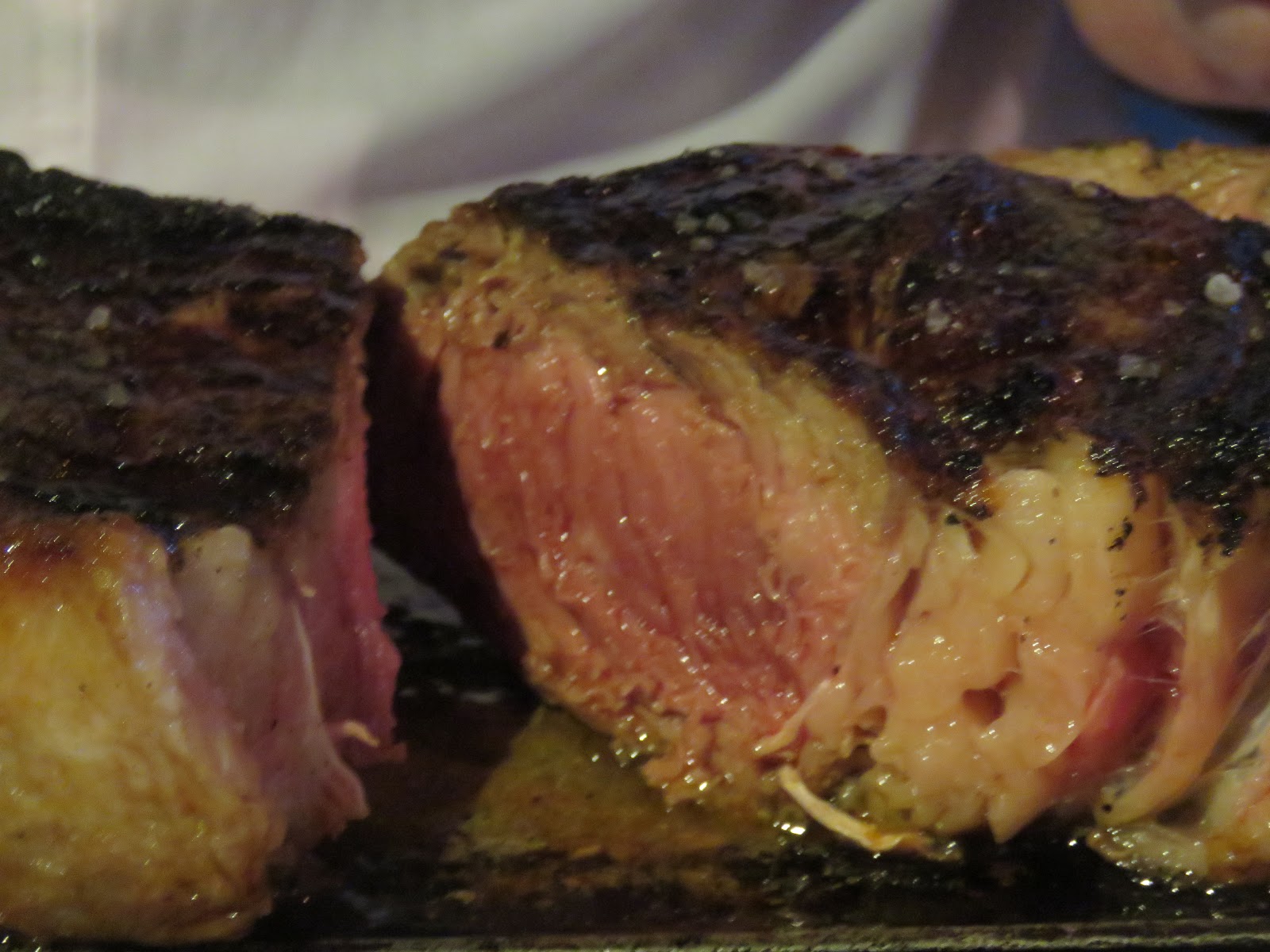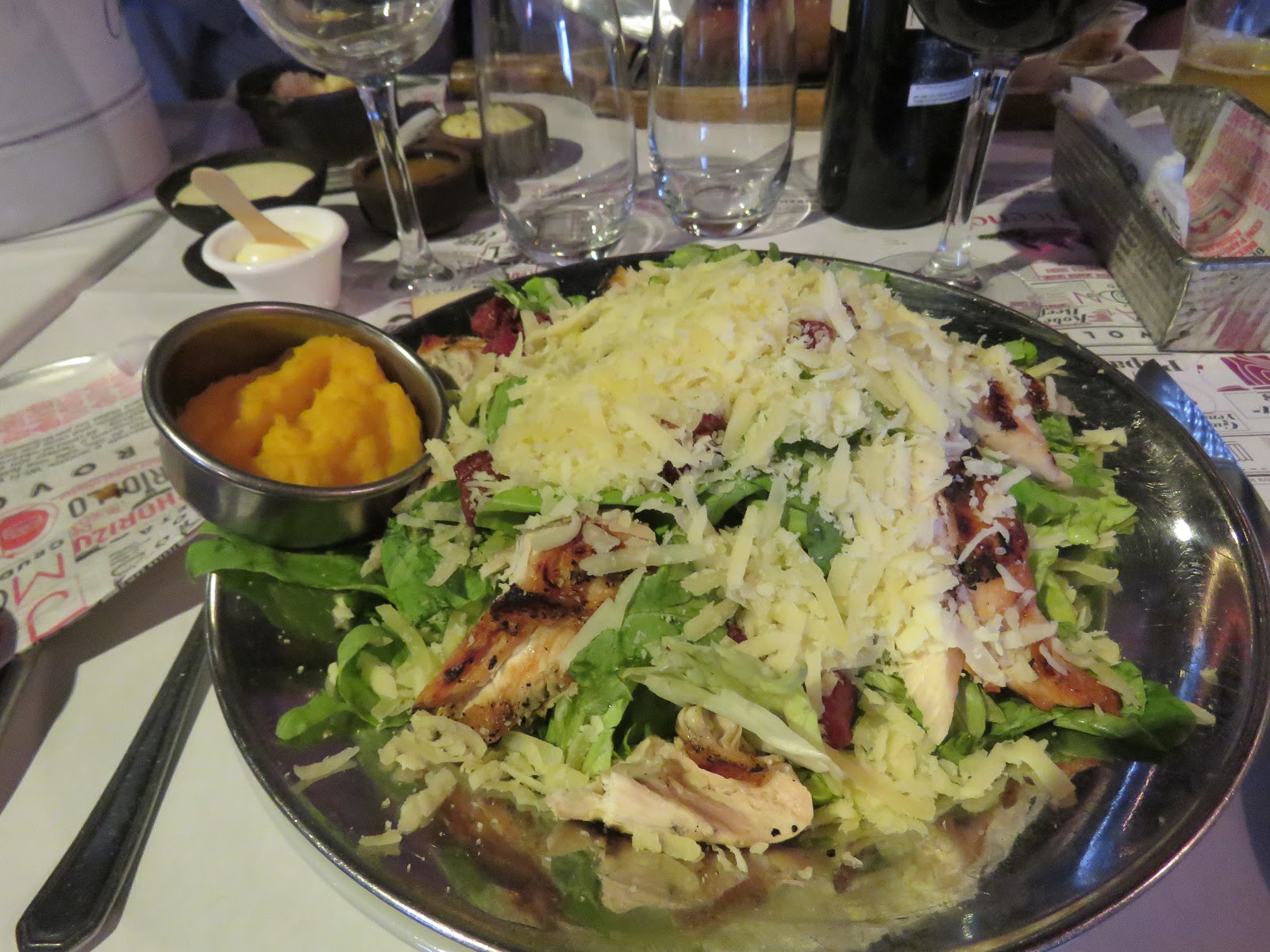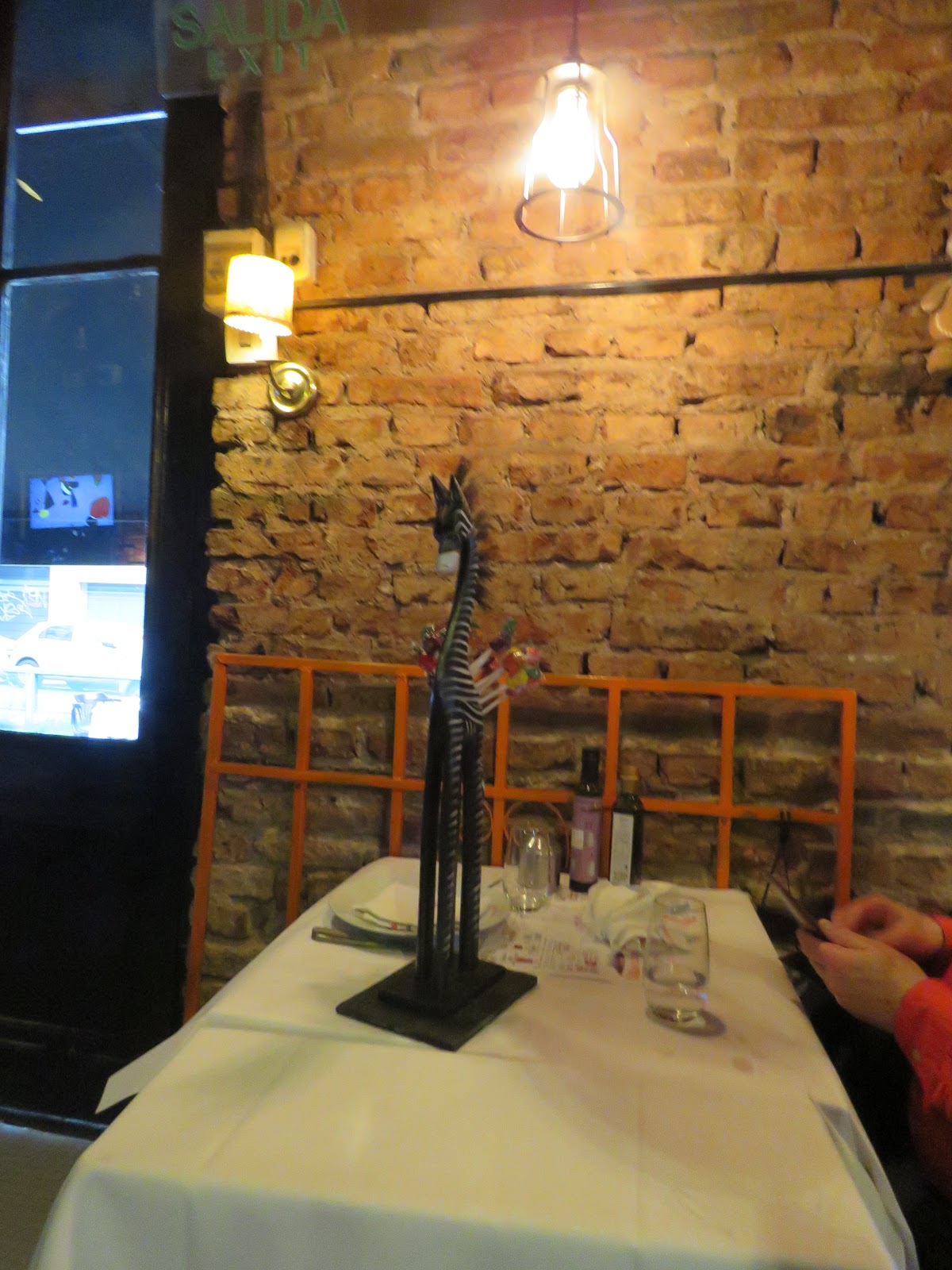 |
| This scene at La Recoleta Cemetery particularly caught our eye. |
We decided it was time to go sightseeing again. With the days dwindling until we depart Buenos Aires (one week from today) and confusing packing ahead of us when we’re leaving the majority of our clothing and supplies behind at the Prodeo Hotel to pick up after the cruise,, we knew we wanted to get out one more time.
 |
| A few included a statue of the deceased, especially those of political or cultural significance. |
We reviewed all of the possibilities deciding the La Recoleta Cemetery, one of the most interesting cemeteries globally, would be our top choice. If anywhere in Buenos Aires bespoke history and culture, this would be the place to visit.
 |
| The entrance to La Recoleta Cemetary is located in the Recoleta neighborhood of Buenos Aires. |
Taking a taxi to the Recoleta neighborhood made the most sense rather than figuring out bus schedules. At a distance of only 5.5 km (3.4 miles) from our hotel, it resulted in a 20-minute taxi ride through heavy midday traffic at the cost of US $14.34 (ARS 270) for the round trip, including tip
 |
| As soon as we began the walk through the cemetery, we knew it would be an unusual experience from other cemeteries we’ve visited in other countries. |
The driver dropped us off at the entrance to the cemetery (no entrance fee is charged for this venue), and the moment we peered beyond the door, we knew we were in for a treat. We’ve often visited cemeteries in different parts of the world when it provides us with an interesting perspective on the culture of generations often going back hundreds of years.
La Recoleta Cemetery was no exception. Here’s is the link to some fascinating information about this proud heritage for the people of Argentina, which is also a popular tourist attraction.
 |
| The blue sky and fluffy clouds were an excellent backdrop for our photos. |
Upon entering the massive facility, it wasn’t easy to decide which direction to take when it was laid out compared to a neighborhood/network of interlocking streets. Each monument consists of a unique historical story, design, and architecture, almost like “homes.”
 |
| Many of the mausoleums had simple lines and designs, while others were ornate. |
In essence, there are “homes” for the dead where they’ll rest for hundreds of more years to come. From time to tie, we encountered the mausoleums/crypts that were crumbling from age and were in the process of repair.
Others were aged and degenerating, with perhaps no family members remaining. If so, those would want to or could afford to bear the expense of rebuilding the ornate structures housing their ancestor/ancestors.
 |
| Each mausoleum has its own story to tell. |
Many were family crypts with the surname emblazoned across the top or entrance to the massive structures. What is particularly unique about La Recoleta Cemetery is the fact that all it contains are mausoleums.
Here’s more information about the cemetery from this site:
“La Recoleta Cemetery (Spanish: Cementerio de la Recoleta) is a cemetery located in the Recoleta neighborhood of Buenos Aires, Argentina. It contains the graves of notable people, including Eva Perón, presidents of Argentina, Nobel Prize winners, the founder of the Argentine Navy, and a granddaughter of Napoleon. In 2011, the BBC hailed it as one of the world’s best cemeteries,[ and in 2013, it was listed among the ten most beautiful cemeteries in the world.
The monks of the Order of the Recoletos arrived in this area, then the outskirts of Buenos Aires, in the early eighteenth century. The cemetery is built around their convent and a church, Our Lady of Pilar (Iglesia de Nuestra Señora del Pilar), built-in 1732. The order was disbanded in 1822, and the garden of the convent was converted into the first public cemetery in Buenos Aires. Inaugurated on 17 November of the same year under Cementerio del Norte (Northern Cemetery), those responsible for its creation were the then-Governor Martin Rodríguez, who would be eventually buried in the cemetery, and government minister Bernardino Rivadavia. The 1822 layout was done by French civil engineer Próspero Catelin, who also designed the current facade of the Buenos Aires Metropolitan Cathedral.[ The cemetery was last remodeled in 1881, while Torcuato de Alvear was mayor of the city, by the Italian architect Juan Antonio Buschiazzo
 |
| There are only a few mausoleums of this style with varying structures for various family members. |
Set in 5.5 hectares (14 acres), the site contains 4691 vaults, all above ground, of which 94 have been declared National Historical Monuments by the Argentine government and are protected by the state. The entrance to the cemetery is through neo-classical gates with tall Doric columns. The cemetery contains many elaborate marble mausoleums, decorated with statues, in various architectural styles such as Art Deco, Art Nouveau, Baroque, Neo-Gothic, and most materials used between 1880 and 1930 in the construction of tombs were imported from Paris and Milan.
 |
| Many of the mausolea appeared as small churches. |
The entire cemetery is laid out in sections like city blocks, with wide tree-lined main walkways branching into sidewalks filled with mausoleums. These mausoleums are still being used by affluent families in Argentina with their own vault and keep their deceased there. While many of the mausoleums are in fine shape and well-maintained, others have fallen into disrepair. Several can be found with broken glass and littered with rubbish. Among many memorials are works by notable Argentine sculptors Lola Mora and Luis Perlotti, for instance. The tomb of Liliana Crociati de Szaszak, due to its unusual design, is of particular interest.”
 |
| Many of the streets appeared as a city block, neatly arranged. |
While roaming through the network of “streets,” we met a lovely couple from Australia and chatted with them for a while. They were equally in awe of the cemetery and also enthralled when we shared a little about our love of their people and their continent after spending over two years in and around Australia.
 |
| With mausoleums added over varying centuries, the blocks were often of varying sizes and widths, as in this very narrow walkway. |
Besides our English-speaking hotel staff, we’ve had little opportunity to converse with English-speaking people while out and about. And, in this particular area of Palermo, there are considerably fewer tourists than in other parts of Buenos Aires.
We gave them one of our business cards when they’d asked to read about our many experiences in Australia. Then, last night while waiting in the queue for “40% off-happy-hour” at La Cabrera, we met another lovely young couple from Ireland who was on a four-month honeymoon after getting married close to Christmas. They were thrilled to hear we’d be spending three months in their country upcoming in spring/summer 2019.
 |
| There are statues atop most of the structures indicative of the deceased’s religious and spiritual beliefs. |
Back at our hotel after dark, we grabbed my computer and headed to the hotel bar where we watched an episode of “Top of the Lake.” as it turned out, the four of us shared a table at the restaurant and had a lovely dinner together. It couldn’t have been more enjoyable. , There wasn’t another hotel guest to be seen.
 |
| A few were not the traditional grey stone exterior, as the case of this dark green structure. |
After a very fitful night’s sleep warranting a 20-minute nap later this afternoon, we’re content to stay put today (until dinner) while continuing to research vacation/holiday home rentals for our upcoming lengthy itinerary.
 |
| It was equally interesting for us to see the older, more weathered mausoleums. |
We’ll be back tomorrow with photos of Evita (Eva) Perrone’s mausoleum, which most visitors flock to when visiting La Recoleta Cemetery. It was a good day. Please check back tomorrow for more.
We want to mention a little more about today being our 2000th post in tomorrow’s post! We can’t believe it! Can you?
Be well.
Photo from one year ago today, January 16, 2017:
 |
| The scenery in Hobart, Tasmania, was breathtaking. We returned to Hobart, a 40-minute drive from our vacation home in the Huon Valley, at a later day for more photos. For more photos, please click here. |































